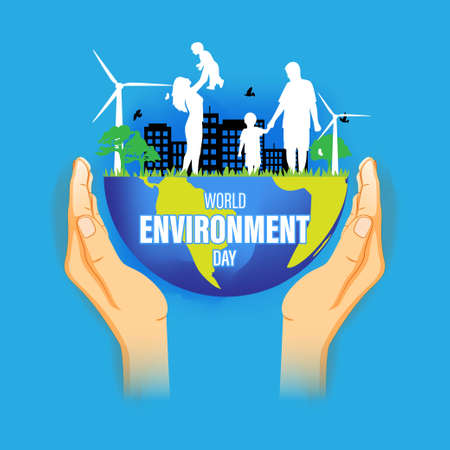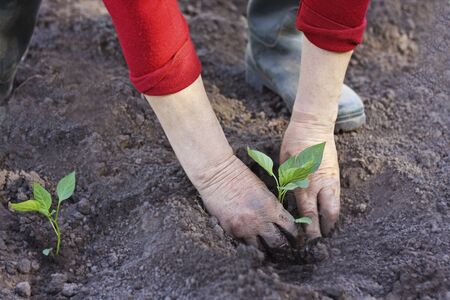Introduction: Understanding Public Health and Swachh Bharat Abhiyan
Public health in India is not just a matter of medical intervention; it is deeply interwoven with social, cultural, and environmental factors that shape the well-being of communities. The concept of public health extends beyond hospitals and clinics to include preventive measures, awareness campaigns, and community engagement. One of the most significant initiatives reflecting this holistic approach is the Swachh Bharat Abhiyan, or the Clean India Mission, launched in 2014. This flagship campaign has captured the imagination of millions across urban and rural India by emphasising cleanliness as both a civic duty and a cultural value rooted in Gandhian philosophy. Swachh Bharat goes beyond the physical act of cleaning streets and toilets; it symbolises a collective aspiration for healthier surroundings and improved quality of life. By linking environmental cleanliness directly with public health outcomes, the mission stands as a powerful reminder that sustainable progress in India requires both behavioural change at the grassroots level and robust support from local governance. Understanding this interconnection forms the foundation for building healthier futures for every Bharatiya.
Environmental Cleanliness: Traditional Practices and Modern Challenges
Environmental cleanliness has always been deeply embedded in the Indian way of life, with its roots stretching back to ancient times. Many traditional practices still influence the present-day approach towards cleanliness, both in urban and rural Bharat. However, the rapid pace of urbanisation and changing lifestyles have brought forth new challenges that need urgent attention.
Traditional Cleanliness Practices in India
In every corner of Bharat, cultural rituals emphasise hygiene and environmental care. From sweeping the house before sunrise to applying cow dung for purifying courtyards, these customs reflect a profound respect for nature and communal health. The concept of “Swachhta” (cleanliness) is not just a personal virtue but a collective responsibility, often seen during festivals like Diwali, where thorough cleaning is done as an act of inviting prosperity.
Examples of Traditional Cleanliness Methods
| Practice | Description | Area Commonly Practised |
|---|---|---|
| Sweeping and Mopping with Natural Materials | Use of neem sticks, coconut brooms, and water mixed with herbal agents for daily cleaning. | Pan-India (urban & rural) |
| Cow Dung Application | Pasting floors and walls with cow dung for disinfection and pest control. | Rural Bharat |
| Community Cleaning Drives | Villagers collectively clean public spaces, wells, and temples regularly. | Rural villages |
| Waste Segregation at Source | Traditional separation of biodegradable kitchen waste for composting or cattle feeding. | Across India, especially semi-urban/rural areas |
Evolving Environmental Issues in Urban and Rural Bharat
The transition from traditional to modern lifestyles has introduced complex environmental challenges. In urban areas, population growth has led to the proliferation of solid waste, plastic pollution, and inadequate sewage management. While Swachh Bharat Abhiyan has made significant progress, maintaining cleanliness in densely populated cities like Mumbai and Delhi remains a struggle due to limited infrastructure and public awareness.
Main Environmental Concerns Today
| Urban Bharat | Rural Bharat |
|---|---|
| Overflowing landfills & plastic waste accumulation Lack of efficient waste segregation Air & water pollution from industrial activities Poor drainage leading to vector-borne diseases |
Poor sanitation facilities Lack of structured waste collection systems Open defecation in some regions Pesticide runoff affecting water sources |
Cultural Shifts & Awareness Gaps
The influence of Western lifestyles has sometimes overshadowed indigenous practices, causing reliance on single-use plastics and chemical cleaners. The disconnect between traditional wisdom and modern living highlights the need for renewed awareness campaigns that blend the best of both worlds—leveraging time-tested Indian methods alongside technological solutions to restore environmental cleanliness across Bharat.

3. Impact of Environmental Cleanliness on Community Health
In the Indian context, the importance of environmental cleanliness cannot be overstated when it comes to community health and overall well-being.
Sanitation and Its Influence
Access to proper sanitation facilities remains a challenge in many parts of India, particularly in rural areas and urban slums. Open defecation and lack of toilets not only contaminate soil and water sources but also increase the risk of diarrhoeal diseases, parasitic infections, and malnutrition among children. The Swachh Bharat Abhiyan (Clean India Mission) has made significant strides in improving sanitation infrastructure, yet continued efforts are essential to ensure every household benefits from safe and private toilets.
Water Hygiene: A Crucial Factor
Safe drinking water is fundamental to good health. In India, waterborne diseases such as cholera, typhoid, and hepatitis A remain prevalent due to contaminated water supplies. Communities that invest in purifying drinking water—through filtration systems or boiling—and safeguarding local water bodies from pollution see marked improvements in public health outcomes. Rainwater harvesting and regular cleaning of water storage tanks are traditional practices that continue to play an important role in promoting hygiene across regions.
Waste Management Practices
Improper waste disposal is a growing issue, especially in rapidly urbanising cities like Mumbai and Delhi. Uncollected garbage leads to breeding grounds for mosquitoes and flies, resulting in the spread of vector-borne illnesses such as dengue, malaria, and chikungunya. Segregation of waste at source, composting organic matter, and recycling plastics are sustainable solutions that empower communities to maintain cleanliness while reducing environmental hazards.
The Holistic Connection
The interplay between sanitation, water hygiene, and effective waste management directly shapes the health landscape of Indian communities. When these elements are prioritised, the results are tangible: reduced disease burden, improved child growth indicators, and increased productivity among adults. By fostering a culture of cleanliness rooted in both modern initiatives and age-old traditions like “Swachhta” (cleanliness), India can pave the way for healthier generations.
4. Case Studies: Indian Local Solutions and Government Initiatives
India’s approach to interlinking public health with environmental cleanliness is best illustrated through its successful government schemes and grassroots interventions. The central and state governments, along with local communities, have rolled out a host of initiatives that demonstrate the tangible benefits of integrating hygiene, sanitation, and ecological preservation.
Major Government Schemes Driving Change
| Scheme/Initiative | Main Objective | Key Health Outcomes |
|---|---|---|
| Swachh Bharat Mission (SBM) | To eliminate open defecation, improve solid waste management, and promote behavioural change around cleanliness. | Significant reduction in diarrhoeal diseases, improved child growth indices, better community hygiene awareness. |
| Namami Gange Programme | To clean and rejuvenate the River Ganga by preventing pollution and promoting sustainable practices along its banks. | Decreased water-borne illnesses, better drinking water quality, improved community participation in river conservation. |
| Mahatma Gandhi National Rural Employment Guarantee Act (MGNREGA) Sanitation Projects | To provide rural employment while constructing toilets and village sanitation facilities. | Boosted rural income, increased latrine coverage, reduced vector-borne disease outbreaks. |
Local Innovations: Community-Led Success Stories
Pune’s Waste Management Model: Pune’s SWaCH cooperative has empowered waste pickers to collect and segregate household waste. This initiative not only improves urban cleanliness but also reduces landfill burden and enhances workers’ dignity and incomes. Health-wise, it has cut down breeding grounds for mosquitoes and rodents.
Kumbalangi Integrated Tourism Village (Kerala): By transforming into India’s first model tourism village with 100% sanitation coverage and eco-friendly waste disposal, Kumbalangi has reported marked declines in gastrointestinal infections and a boost in overall wellness among residents and visitors alike.
Impact Analysis: Data from Government Reports
| Indicator | Pre-Initiative Status | Post-Initiative Status (2023 Data) |
|---|---|---|
| % Households with Toilets (Rural) | 39% (2014) | 98% (2023) |
| % Villages Open Defecation Free | ~42% (2014) | >99% (2023) |
| % Waterborne Disease Outbreaks per Year (in select districts) | 35% | 14% |
Cultural Relevance: Jan Bhagidari (People’s Participation)
A unique feature of these programmes is the emphasis on Jan Bhagidari, or people’s involvement. From school children participating in Swachhta rallies to religious leaders advocating for river cleanliness during Kumbh Mela, this participatory approach ensures sustainability and respect for local traditions.
The synergy between local solutions and flagship government missions demonstrates that when public health is prioritised alongside environmental cleanliness—embracing both modern strategies and traditional wisdom—India achieves remarkable gains in health outcomes and quality of life. These case studies serve as models for other developing nations grappling with similar challenges.
5. Community Involvement: The Role of Citizens and Grassroots Movements
In the Indian context, community participation stands as the backbone for sustaining both environmental cleanliness and public health improvements. The dynamic involvement of citizens, NGOs, and local Panchayats has been pivotal in driving change from the grassroots level. Initiatives like Swachh Bharat Abhiyan have demonstrated that when individuals take ownership—be it through regular cleaning drives, segregation of waste at source, or promoting hygiene awareness in their mohallas—the impact is both visible and lasting.
The Power of Collective Action
Indian society, with its rich tradition of collective responsibility and social unity, offers a fertile ground for grassroots movements. Whether it’s self-help groups in Kerala promoting waste management or youth volunteers organizing clean-up campaigns along the Ganga ghats, these local actions reinforce the idea that public health is not just a governmental duty but everyone’s shared responsibility.
NGOs as Catalysts for Change
Non-Governmental Organisations (NGOs) play a crucial role in bridging gaps between policy and implementation. By collaborating with municipal bodies and leveraging government schemes, NGOs educate communities about best practices in sanitation, water conservation, and vector control. Their field-level interventions often result in behavioral shifts—encouraging handwashing habits, discouraging open defecation, and advocating for safe drinking water—which directly uplift community health standards.
Panchayats: The Local Guardians
Panchayati Raj Institutions are uniquely positioned to drive sustainable change at the village level. Empowered by decentralization, Panchayats mobilise resources for constructing toilets under SBM (Swachh Bharat Mission), ensure regular waste collection, and enforce local bylaws on cleanliness. Their proximity to people allows them to act swiftly on issues like stagnant water or garbage accumulation, preventing disease outbreaks before they spiral out of control.
Ultimately, India’s journey towards a healthier and cleaner environment hinges on active citizen engagement. When every household feels responsible—whether by participating in weekly shramdaan or supporting local eco-friendly initiatives—the ripple effect touches all aspects of public health. In this synergy of government policies and community action lies the true strength of India’s mission for swasthya (health) and safai (cleanliness).
6. Charting the Way Forward: Integrating Public Health with Environmental Policies
Recommendations for Policymakers and Stakeholders
To ensure a healthier and cleaner India, it is crucial for policymakers and stakeholders to embrace a holistic approach that bridges public health initiatives with environmental policies. The following recommendations are designed to promote synergy between these domains while respecting India’s unique cultural values and contemporary needs:
1. Foster Cross-Sector Collaboration
Create interdisciplinary task forces comprising experts in health, environment, urban planning, and traditional Indian practices like Ayurveda and Swachh Bharat Abhiyan volunteers. Such collaboration can help design culturally appropriate interventions that resonate with local communities and address both environmental cleanliness and health outcomes.
2. Strengthen Community Participation
Empower panchayats, women’s self-help groups, resident welfare associations, and school eco-clubs to take ownership of sanitation drives, vector control programmes, and waste management. Incentivize participation through recognition schemes such as “Clean Village Awards” or “Healthy Colony Badges,” fostering pride in maintaining clean and healthy surroundings.
3. Integrate Traditional Wisdom with Modern Science
Promote the use of time-tested Indian practices such as rainwater harvesting, composting kitchen waste (kitchen ka kachra), and planting medicinal plants like neem and tulsi in public spaces. Blend these practices with scientific approaches to pollution control and disease surveillance for sustainable impact.
4. Enhance Data-Driven Decision Making
Invest in robust data collection systems that track both environmental parameters (air quality, water purity) and public health indicators (incidence of diarrhoea, dengue cases). Use this data to identify hotspots where targeted interventions will yield maximum benefit, especially in rapidly growing urban areas and underserved rural regions.
5. Prioritise Education and Behaviour Change
Integrate environmental health topics into school curricula in local languages. Run sustained mass media campaigns—on TV, radio, WhatsApp groups—involving celebrities or spiritual leaders to reinforce messages about hygiene (swachhta), safe water use, and the links between cleanliness and good health.
6. Ensure Equitable Access to Clean Resources
Expand access to piped water supply, safe toilets (Shauchalayas), proper drainage systems, and affordable waste disposal services in both urban slums (bastis) and remote villages. Special focus should be given to marginalised communities who bear a disproportionate burden of environment-related diseases.
Towards a Swasth Bharat: The Road Ahead
The integration of public health strategies with environmental policies must be an ongoing process involving continuous feedback from grassroots stakeholders. By respecting India’s diverse cultures while embracing innovation, policymakers can lay the foundation for a truly Swasth aur Swachh Bharat—a nation where clean environments nurture healthy lives for all.


